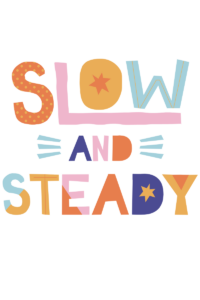This year I attended my first New Cubed conference held by the Associations of Mathematics Teachers of New York, New Jersey, and New England. For short AMTNYS, AMTNJS, and AMTME. Get it now “New Cubed”. Here are my takeaways from the conference.
Mike Flynn a keynote speaker touched on creating powerful moments in class. It led you to reflect on how many powerful moments you experienced in math class, and how many of those experiences are we providing to our students.

Some negative experiences we’ve had and are giving are worksheets.
My friend Hilary Kreisberg gave a compelling presentation on how to prepare students for the future. Students need to be proficient at complex problem solving for jobs that haven’t even been created yet. I had a great partner during that session that worked with me on solving some rich tasks.

By the way, Hilary, along with Matthew Beyranevand, are the authors of Adding Parents To The Equation which I highly recommend for parents to get. I’m also going to suggest that districts purchase this book. Raffle it off during a math/parent night. Hold a book club in your community with your parents. Help build the bridge between parents and math. It will help alleviate the math anxiety some parents have.
Alison Mello and Nicki Newton had us explore how to use bead strings as a number line. I was familiar with bead string activities. I was floored when they shared that you could change the bead colors to represent decimals. I always found that using bead strings for decimals was confusing because students just spent so many years seeing these bead strings as whole numbers. What a small detail that has a strong impact.
Heidi Bromley presented some hands-on activities you could use when balancing equations at the primary level. I want to point out how the clothespins have digits on one side but the representation of those digits on the other. I found some ways to differentiate this activity, which I plan to use at my future PD’s.


Lynda Brennan had us reflect on productive beliefs from Principles To Action using a Q-Sort. Whenever you can be reflective throughout the year and see how much you’ve grown as an educator it is a positive experience.
Mary Altieri spoke about differentiation and truly hit the nail on the head. I say this all the time during my presentations. Differentiation does not mean everything you make has to be different. You can have one activity that reaches all students in different ways.
Jenny Tsankova presented some great strategies to unpack word problems.
Marianne Strayton had us explore photo number talks. I know many of us have seen these. My recommendation is to go out in your community to find photos that could be brought back to math class. Below is an example of one I posted on Instagram a while back. It is the ceiling of my nail salon. How many arrays do you see?

Denise Rawding had us play with some numberless word problems and shared great resources from her site Primary Math Stations.
The last presenter I saw was Jim Matthews. He kept me on my toes with some high-quality tasks. Putting yourself in the “student” seat is very humbling. There were many other great presenters, the ones above were the sessions I attended.
The theme that ran across all these sessions was that our classrooms need to be an environment of problem solvers not problem performers, with opportunities for compelling experiences. Below are some of the ones I played with, feel free to share your answers in the comment section.


It’s always an excellent conference if you can leave with some swag. I was fortunate enough to get all of these resources.

Going to conferences is important for growing our pedagogy. But not all districts can afford to send many teachers and coaches to national conferences like NCTM. It can be very expensive with travel included. State and regional conferences can be much cheaper which means you can send more teachers for the same amount it would cost to send a few teachers to a national one. So I am encouraging you to take a look at the state/regional conferences in your area. If you are from New York like me check out the AMTNYS website.
Check out:

